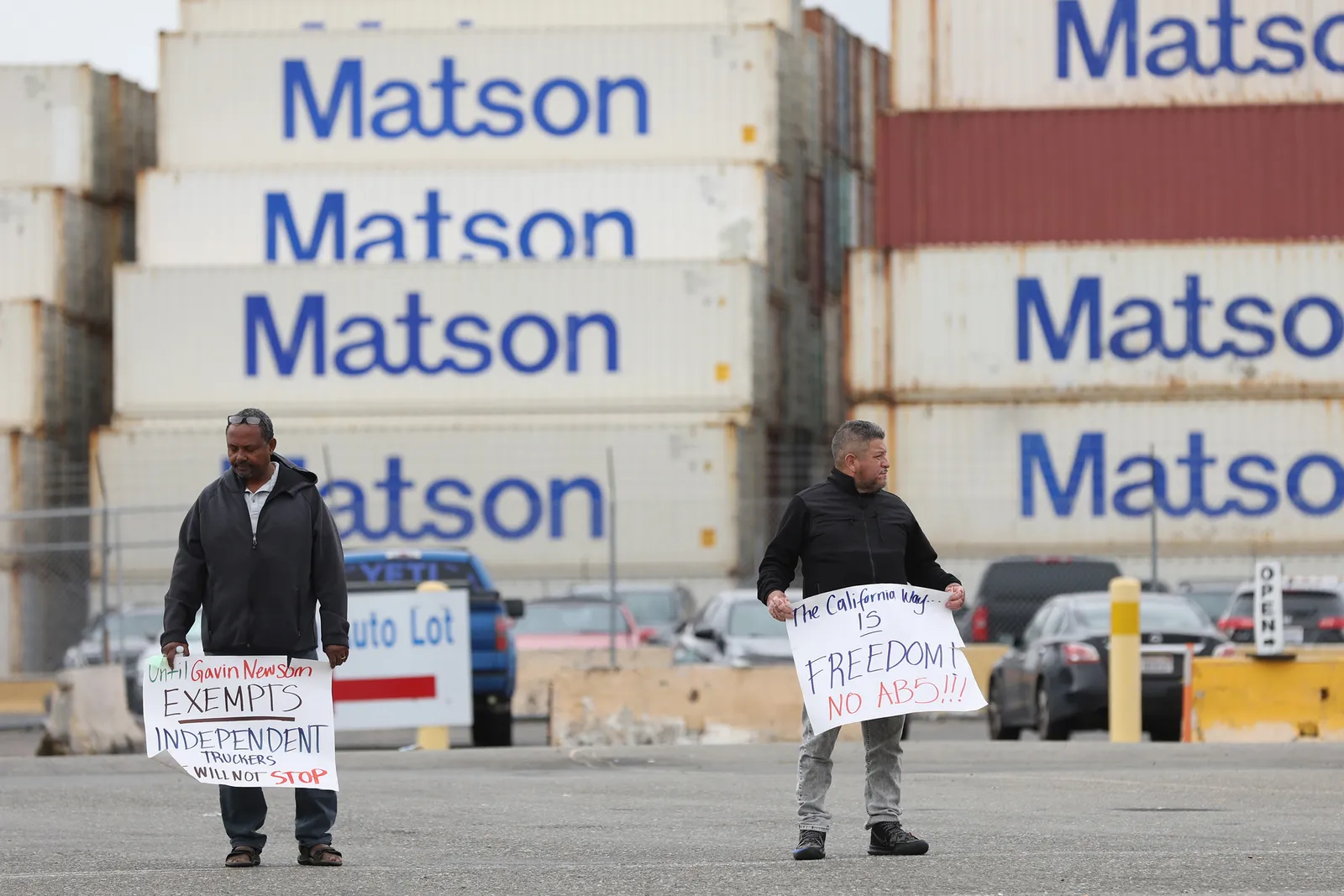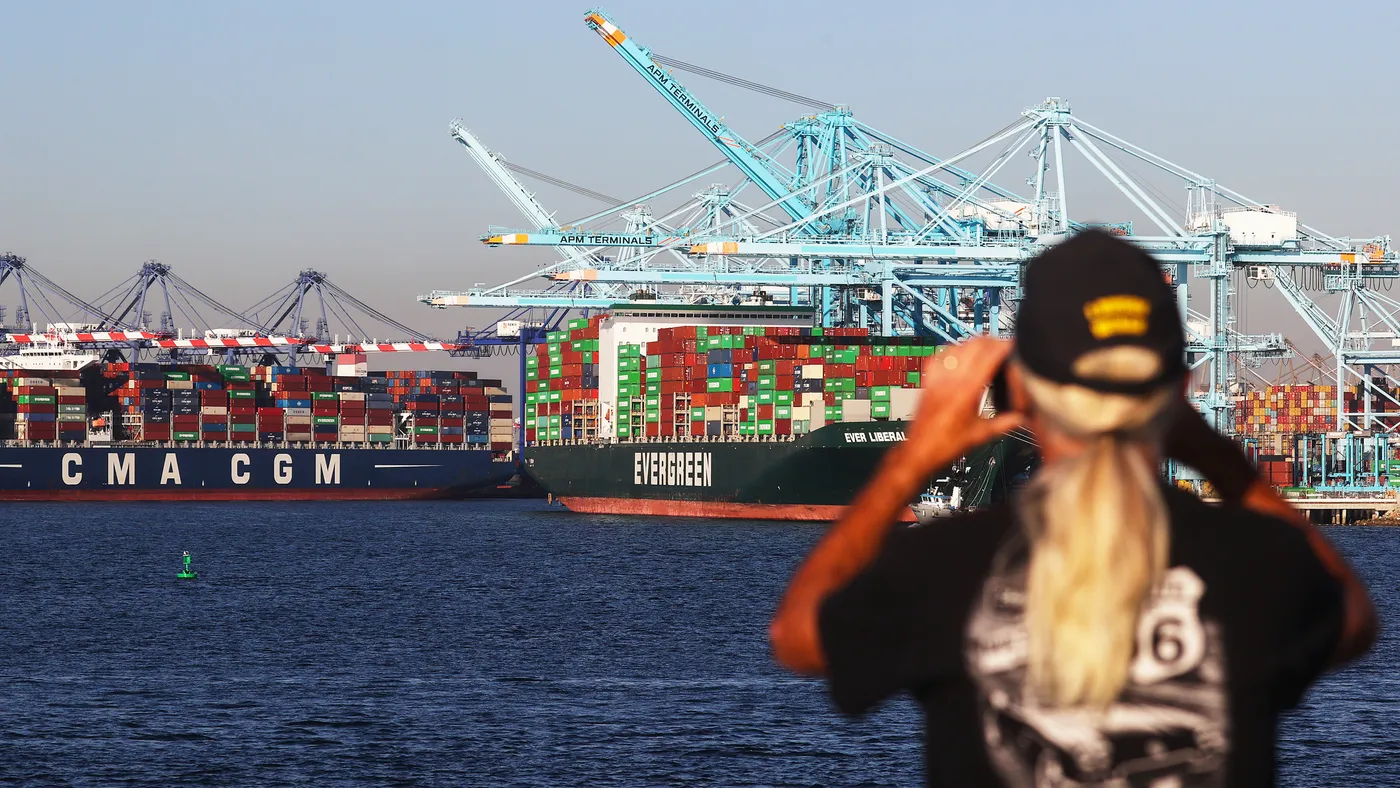Supply chain upheaval kept businesses on their toes in 2022.
While port congestion that dominated headlines finally began to clear in the second half of the year, other disruptions created new headaches. Rising inflation, strike threats and slowing demand triggered a wave of business uncertainty following months of expansive growth.
We’ve curated more than a dozen moments that captured supply chains’ highs and lows in 2022.
A string of cargo thefts hit Los Angeles rail yards

At the start of the year, Los Angeles was the scene of significant congestion in the U.S.
As trains idled in a railyard near the city's downtown, some took the chance to break in and steal the captive cargo. While locals told Supply Chain Dive the cargo thefts had been going on for months, the issue captured national attention in January when a train derailed due to debris on the tracks.
Russia’s invasion of Ukraine disrupts global markets

A military invasion in February sent economic shockwaves through the world and disrupted global markets. Within days of Russia's invasion of Ukraine, supply chains began to see the effects: oil prices rose; air cargo was constrained, delayed or averted; and risks of food and material scarcity rose worldwide as Ukraine’s ports, agricultural and industrial bases were threatened.
Ever Forward gets stuck in the Chesapeake Bay

A few specters of the previous years would return to haunt 2022, as yet another cargo ship run by Evergreen Marine got stuck in a body of water. This time, the Ever Forward was grounded in the Chesapeake Bay, and it took over a month to set it free, setting off a domino effect of delays for the cargo onboard.
Lockdowns in China disrupt production

China’s zero-COVID policy meant the country imposed strict lockdowns when infections began to rise early in the year, affecting port cities like Shenzhen in March and Shanghai’s industrial zones in April. Similar lockdowns continued throughout the year, causing widespread disruption and, at times, bringing transportation to a halt.
Rail service issues enter the spotlight

Rail cars piled up at West Coast ports, creating significant congestion that threatened to disrupt transport of critical commodities such as diesel and food. In a bid to play catch up, some railroad companies like Union Pacific and BNSF declared embargoes to mitigate backlog and disruptions sparked by labor challenges and elevated inventory levels.
But as service challenges mounted, federal regulators stepped in. The Surface Transportation Board grilled company CEOs on their plans to restore service, and began requiring carriers to provide a more transparent look at their performance.
Port labor contract negotiations spark uncertainty

West Coast port employers were unable to reach an agreement with dockworkers before a July 1 deadline, sparking concern of major disruptions at major container gateways. Talks have stalled and both sides have promised to maintain operations while negotiations continue. But shippers, fearing disruption at any point, began to divert cargo toward East Coast ports, reshaping global cargo flows in the process.
Biden signs the Ocean Shipping Reform Act

President Joe Biden signed the first major shipping act in decades in a move expected to significantly expand agency enforcement powers. With fears of inflation reaching a high point, OSRA was viewed as a tool to get rising supply chain costs under control.
Trucker protests over AB5 shut down Oakland port

To everyone’s surprise, the first West Coast port-wide closure came not from longshore labor, but from a trucker protest. Following a failed appeal against California state law AB5, truckers brought the port to a full halt for several days. The event was a preview of the potential impact labor unrest could have on cargo flows.
FedEx Ground faces the prospect of a contractor revolt

A major contractor for FedEx's Ground unit raised fears of potential shipping delays on Black Friday.
Spencer Patton, founder and president of Patton Logistics and Route Consultant, formed a coalition of contractors advocating for better compensation as inflated fuel costs, vehicle expenses and wages cut into profit margins.
When FedEx pushed back, Patton rallied for contractors to stop operations during Black Friday. The contractor group eventually disbanded in November.
East Coast ports benefit from an influx of cargo as shippers flee disruption

Demand at West Coast ports dropped significantly as shippers opted for less risky alternatives. Major companies such as 3M began investing in East Coast shipping sites in a bid to reduce shipping times and potential delays for customers moving cargo to Asia.
The Port of Los Angeles is now trying to make up for lost cargo volumes and convince shippers to return to the West Coast.
Logistics industry rallies to help with Hurricane Ian recovery

One of the strongest hurricanes to make landfall in the U.S. prompted rail and port closures along the Southeast Coast, disrupting shipments of critical supplies. Truck drivers joined forces with Operation BBQ Relief to deliver at least a million hot lunches and dinner to Floridians.
Congress acts to prevent a shutdown of the US rail system

An impasse over paid sick leave sparked concerns of a potential rail strike or lockout anticipated to cost the economy roughly $2 billion a day. Lawmakers quickly acted, voting to force four holdout unions to accept their contracts as written.
Biden signed the measure into law a month after hundreds of shipper associations warned of production shutdowns and layoffs as a result of a potential shutdown.
High inventory levels pummel retailers

After facing inventory shortages in 2021, many retailers accelerated and placed larger orders this year to avoid possible backlogs. But with less congested supply chains and lower consumer demand, retailers were suddenly faced with inventory glut. In turn, companies like Stanley Black & Decker and Macy’s have slashed SKUs, canceled orders and implemented steep discounts for Black Friday and Cyber Monday in an attempt to clear out the excess.











